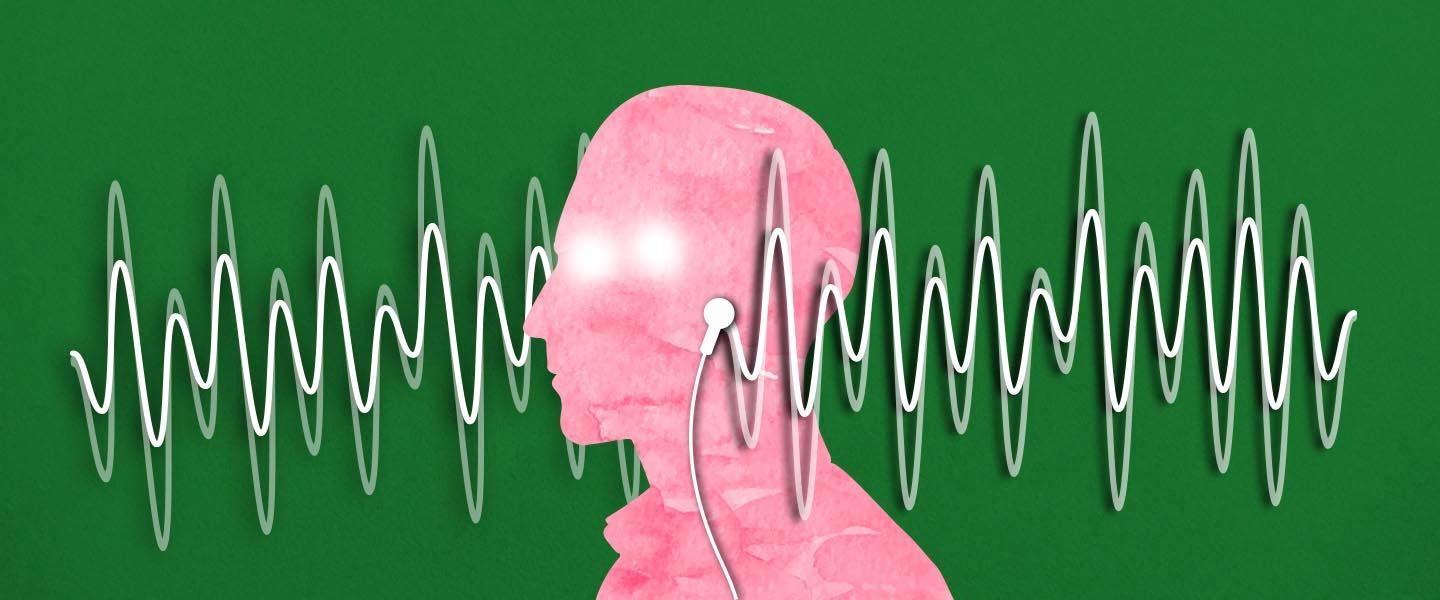For the past month, I’ve hit a plateau at the gym. My one-rep max for deadlifting has remained frozen, no matter how many protein shakes I drink. The same for my bench press. I also find myself struggling with squatting. I’ve tried to hack my way to bigger gains by sleeping more, cutting back on sugar, etc., but nothing seems to get me over the hump.
Sensing my frustration, a fellow gym-goer recently offered me a piece of unsolicited advice — ditch my usual workout playlist of bad nu metal and late 2000s indie rock for “binaural beats,” a kind of ambient, slow-paced music he said would both increase my focus and alter how my body works physically. By allowing the binaural beats to infiltrate my brain, he explained, it would relax my muscles, allowing me to lift heavier. In fact, he credited his bulging biceps to 20 minutes of lifting, three days a week, with binaural beats flowing through him the whole time.
Binaural music is often considered to be a subset of ambient music, or instrumental tracks that employ long, naturalistic sounds and smooth transitions rather than the rigid structures of pop music. By focusing on the soundscape itself, ambient music can prove to be soothing and help calm people who suffer from anxiety. But binaural enthusiasts (like the gym guys who swear by it) argue that there’s a key difference between it and ambient music — i.e., because each ear hears binaural beats at different frequencies, the brain subconsciously seeks to balance the soundwaves, resulting in a subtle change in neuron activity.
For example, if your left ear receives a 300-hertz tone and your right ear receives a 280-hertz one, neural communication in the brain reorganizes itself so it’s as though you’re receiving and processing a single tone. This reorganization, neurologists say, can place the brain in different states of focus and relaxation.
It’s in the gym where binaural beats are a particular source of intrigue. (Numerous services even make custom versions that are optimized for cardio and strength workouts.) On fitness subreddits and bodybuilding forums, however, the reviews are mixed. Some gym-goers credit binaural beats with helping them stay focused while working out, going as far as believing that they foster a better awareness of their bodies. On the flip side, though, there are just as many people who think binaural beats are a fad, with their benefits largely rooted in pseudoscience.
Speaking of science, there’s not a lot of research on the physical effects of binaural beats. Most proponents cite a 2015 study in the Front Psychology journal; in it, researchers from the University of Bonn found that low-frequency binaural beats did cause an increase in brain stimulation, and among some people, increased cognitive awareness. On the negative side of the ledger, though, a 2018 meta-analysis in Psychological Research outlined that, while binaural beats did affect the processes of the brain, the effects on listeners were too varied to draw any conclusion as to whether they could facilitate physical changes, too.
“Sound is essentially a series of vibrations, and vibrations can affect the function of the body,” says Fiona Barker, a U.K.-based audiologist and children’s author. “That vibration travels directly through our skeleton to the inner ear where it’s transduced by the hair cells. The inner ear also contains the vestibular system, which plays an important role in balance and coordination.” She adds that although there isn’t much evidence to suggest that these vibrations can enhance a body’s physical capabilities, it can have an effect on the intensity of bodily responses to natural phenomena like fear or pain.
It’s here where some therapists believe binaural beats can help those with mental-health issues or particular types of autism. “Music therapy is about using music with fine and sometimes gross motor movements, using rhythm, pulse and texture — i.e., how hard/soft can you hit/stroke an instrument in time to this beat, to improve motor function and associated brain function if possible,” explains Marianne Rizkallah, a London-based music therapist.
As proof of the efficacy of binaural beats, she cites a young patient with autism who, through a treatment that required listening to such beats twice a day, allowed him to better manage his aggression and discover whether he was left- or right-handed — something his brain hadn’t been able to decipher previously. “It helped to regulate his thoughts and organize them in a way that made more sense for him,” Rizkallah says, leading to her belief that the unique vibration patterns of binaural beats “enabled him to pause, think and choose how to most efficiently carry out his motor function.”
So binaural beats seemingly do have a neurological effect, and for some people, it can have a cognitive effect. But what about those gains?
Well, I’ve been listening to various binaural beat tracks from Spotify for the past week. I’m certainly calmer — and more productive, if only because I’m not changing the song I’m listening to every 20 seconds — but I still haven’t been able to surpass my plateau. For now then, it looks like it’s back to Limp Bizkit.

